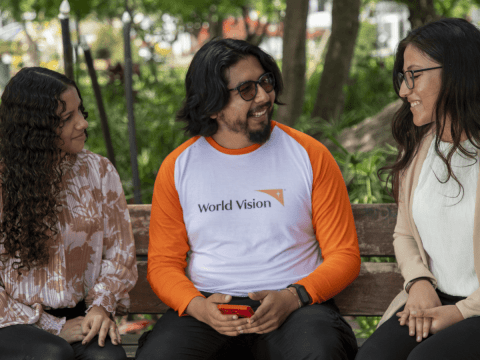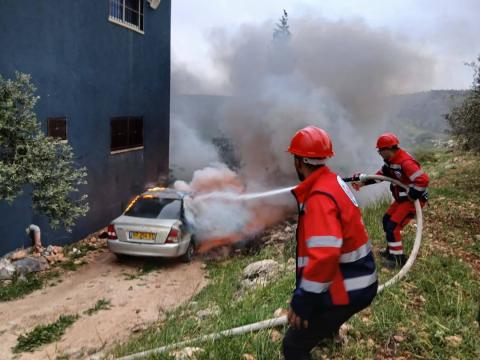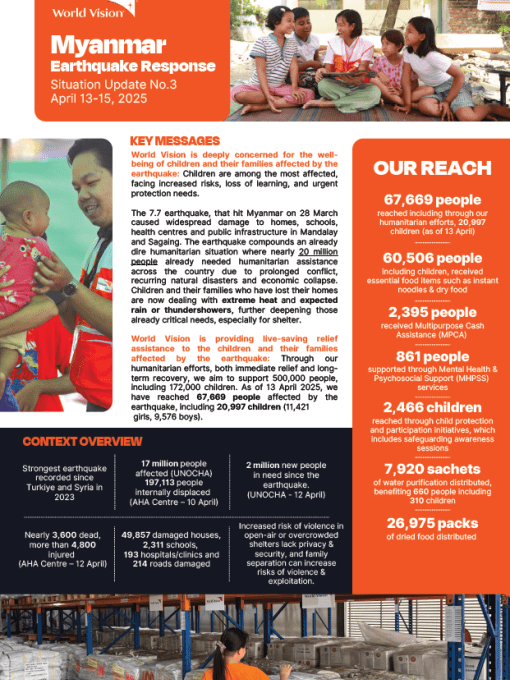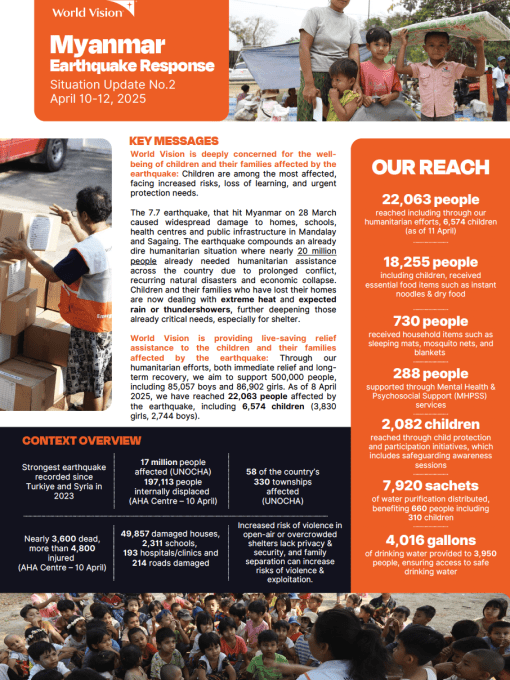Giving children a voice following major events and disasters
Download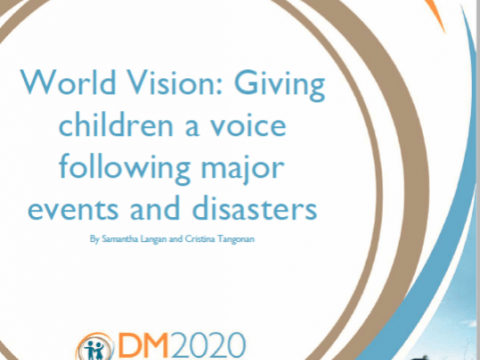
To understand the extent of how disasters impacted children’s lives, as well as to gain insight into how effective World Vision’s (WV) relief efforts were in helping children, two researchers from Claremont Graduate University worked with WV to conduct an archival document review and qualitative content analysis of 23 WV reports. The reports covered a 10-year timespan from 2005 to 2015 and described the experiences of approximately 11,390 children between the ages of five and 17 years old. This study focused on understanding disasters and disaster relief from the perspective of the children who experienced them.
The 23 reports were synthesised into 11 events that occurred in 15 different countries, with four events taking place across multiple countries. These events were associated with geophysical events (e.g. earthquakes, tsunamis) (two out of 11 events), climatological events (e.g. drought) (four out of 11 events), hydrological events (e.g. flood) (one out of 11 events), meteorological (e.g. typhoons) (one out of 11 events), complex humanitarian emergency (e.g. conflict) (one out of 11 events), and other (e.g. multiple events combined) (two out of 11 events).
The most common factors that disrupted children’s lives pertained to food insecurity, poor economic development and livelihoods, and lack of access to education and play. These factors influenced children’s lives across all 11 events. Other powerful factors were poor physical health (10 out of 11 events), diminished mental health as a result of coping with disasters (eight out of 11 events), negative consequences regarding child protection and safety (seven out of 11 events), poor water, sanitation and health (WASH) (seven out of 11 events), and damaged, insufficient or unsafe infrastructure for accessing necessary resources (seven out of 11 events). In six out of 11 events, children also mentioned faith-related consequences.[1]
- See our other recent disaster management publications, including a case study on nutrition programming in South Sudan and our education program in conflict-affected Iraq.
[1] For more detailed information about the distribution of factors by event type, refer to Appendix S in the report.
